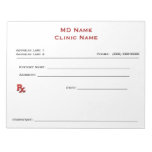• Review financial reports
Three reports – the income statement, cash flow forecast, and balance sheet – can give you a clear, concise indication of your group's financial performance. From these reports, you can learn more about your cash flow. How is revenue trending? Are there any outliers in expenses? What is the forecast for cash flow based on procedure volume, modality mix, payer mix, and payment trends?
You want to compare current periods with prior years' performance and against the budget to reveal variances and trends. Reviewing measures such as revenue per full-time employee (FTE), compensation package per FTE, and overhead as a percentage of total expense will also help you understand whether your practice's performance is in line with your business plan and how your practice compares with other practices nationally.
• Define relevant benchmarks
With regard to benchmarks, be sure to benchmark data that you consider important to the growth of your practice. Common measures include work relative value units (wRVU) per day worked, average procedures per year per FTE, average collections per day per FTE, W2 per wRVU, new patients per month, and scheduling capacity. Obtaining these measures is critical, but even more important is using this information to drive business decisions.
• Start with accurate documentation
Although claim denials may end up in the business office, they often start in the physician's office due to a lack of required, proper documentation. As an independent business owner, you need to stay up to date on proper documentation methods and continuous coding changes to lessen the likelihood of payment denials or long accounts receivable (AR) cycles. Identifying trends in front-end denials should lead to corrective training, education, and action. Similarly, practices must maintain and regularly review their payer contracts to ensure payer compliance and market rates are in place.
• Connect the dots
Keep in mind that each decision you make should comply with your groups financial, strategic, and patient care objectives. Therefore, your group should have a decision framework in place that provides an efficient process for making business decisions.
For example: Who has authority to decide? What are the financial and shareholder compensation implications? Is there a downside/upside? How soon must a decision be made?
Medical practices are unique businesses, and as an owner or administrator of this unique business, you may be well-served to seek revenue cycle management services, medical practice management services and/or, financial management advice from third-party experts aligned to the field.




No comments:
Post a Comment